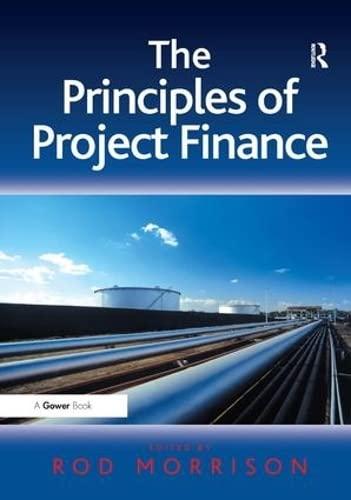Question
Multinational Financial Management: International Capital Budgeting Although the same basic principles of capital budgeting apply to both foreign and domestic operations, there are some key
Multinational Financial Management: International Capital Budgeting
Although the same basic principles of capital budgeting apply to both foreign and domestic operations, there are some key differences. First, cash flow estimation is more complex for overseas investments. Most multinational firms set up separate subsidiaries for each foreign country in which they operate. The relevant cash flows for the parent company are the dividends and royalties paid by the subsidiaries to the parent, translated into dollars. The process of sending cash flows from a foreign subsidiary back to the parent company is known as ( )of earnings. Second, these cash flows must be converted into the parent company's currency, so they are subject to exchange rate risk. Dividends and royalties are normally taxed by both foreign and home-country governments.
In addition, a foreign government may restrict the( ) of these earnings to the parent company. From the perspective of the parent company, the relevant cash flows for foreign investment analysis are those that the subsidiary is actually expected to send back to the parent. In addition to the complexities of the cash flow analysis, the cost of capital may be different for a foreign project than for an equivalent domestic project because foreign projects may be more or less risky. Higher risks might arise from exchange rate risk and political risk. A lower risk might result from the benefits of international diversification. Quantitative Problem: International Machinery Company (IMC) is a Swedish multinational manufacturing company. Currently, IMC's financial planners are considering undertaking a 1-year project in the United States. The project's expected dollar-denominated cash flows consist of an initial investment of $2,500 and a cash inflow the following year of $3,950. IMC estimates that its risk-adjusted cost of capital is 16%. Currently, 1 U.S. dollar will buy 7.4 Swedish kronas. In addition, 1-year risk-free securities in the United States are yielding 4%, while similar securities in Sweden are yielding 3%.
a. If the interest parity holds, what is the forward exchange rate of Swedish krona per U.S. dollar? Round your answer to 2 decimal places. Do not round intermediate calculations. Swedish krona per U.S. dollar
b. If IMC undertakes the project, what is the net present value and rate of return of the project for IMC in home currency? Round your answer to 2 decimal places. Do not round intermediate calculations. NPV: Swedish kronas Rate of return: %
First 2 drop downs (options)
-revaluation
-repatriation
-reinvestment
Step by Step Solution
There are 3 Steps involved in it
Step: 1

Get Instant Access to Expert-Tailored Solutions
See step-by-step solutions with expert insights and AI powered tools for academic success
Step: 2

Step: 3

Ace Your Homework with AI
Get the answers you need in no time with our AI-driven, step-by-step assistance
Get Started


